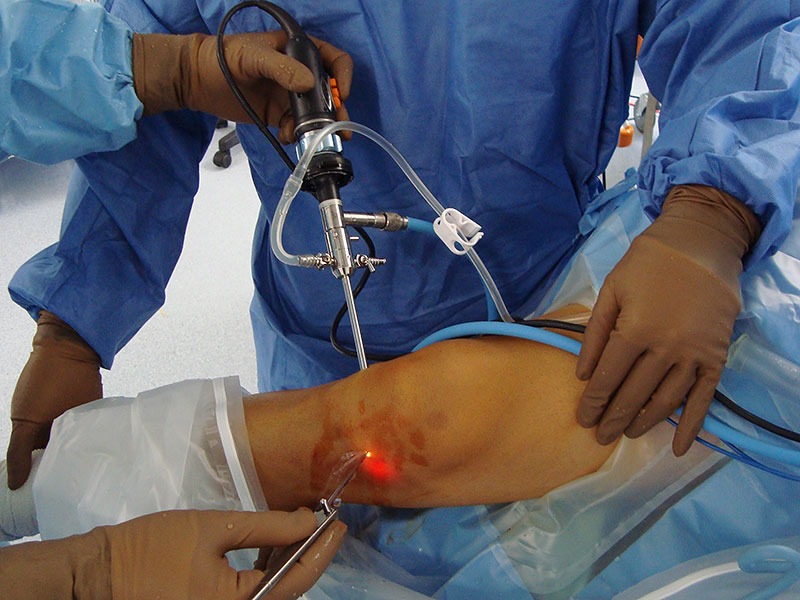Meniscus Injuries
The meniscus is a floating cartilage in the knee which mainly acts as a
shock
absorber. There are two menisci, the inside or the medial meniscus and the
outside
or the lateral meniscus. The meniscus works to reduce the load on the
cartilage of
the knee, preventing the development of arthritis in the knee. There are
different
types of meniscus injuries based on the mechanism of injury, type of tear
and time
since injury. It is usually seen following a sudden twisting injury to the
knee like
when getting up from a low seated position or while playing sports. It is
very
important to address a meniscus injury at the earliest.
Symptoms of Meniscus Injury Include
- Pain – usually localized to the site of the
injury. Usually begins with a sharp twisting injury to the knee.
- Clicking – that can be heard with certain
movements of the knee.
- Locking – where the knee gets stuck in
certain positions, making it difficult to move freely.
- Giving way – the knee feels unstable, giving
the sense that you may fall.
The Treatment Options Include
- Pain medications – A short course to reduce
pain and reduce swelling.
- Physiotherapy – To improve muscle control and
strength to reduce the load on the knee .
- Lifestyle modifications – Like reducing
weight, avoiding activities which increase the load on the knee.
- Intra articular injections – Like steroid or
hyaluronic acid.
- Arthroscopy – i.e. keyhole surgery is the
gold standard surgical treatment for a meniscal injury.
Arthroscopic surgery
Arthroscopic surgery or keyhole surgery is the main stay surgical procedure for
meniscal injuries.
There are two types of procedures performed
- Partial meniscectomy – This is usually
performed in the older patients with long standing tears. In these cases, the
tear cannot be repaired due to poor tissue quality and the torn and
non-functional part is removed allowing the remaining part of the meniscus to
function appropriately. There is minimal recovery time with most patients able
to return to daily life within a few weeks.
- Meniscus repair – Here, the torn ends of the
meniscus are repaired or sown back to each other allowing the meniscus to heal
and regain full function. This is performed usually in younger patients when
there is an acute traumatic injury.
There are a lot of factors to consider when deciding the appropriate treatment for a
meniscus injury.
Consult your doctor to formulate a treatment plan for your personalized needs.
